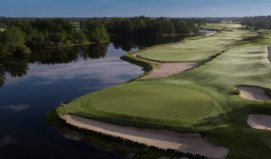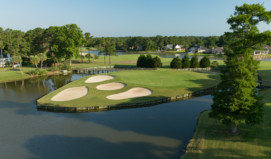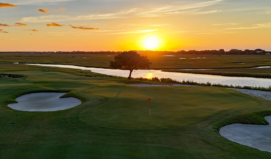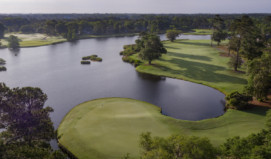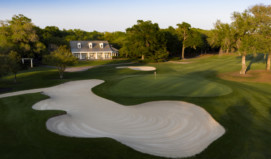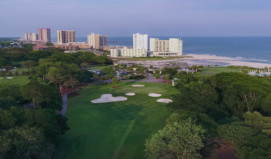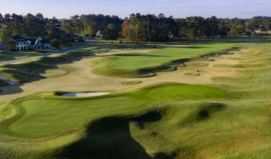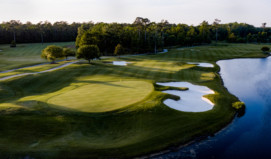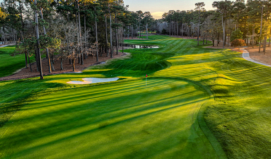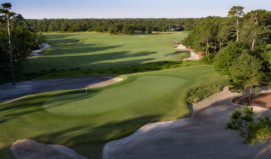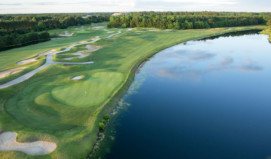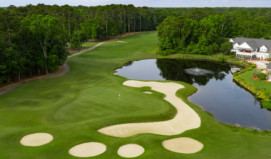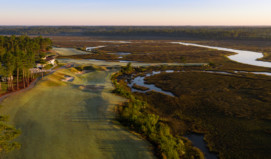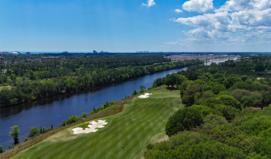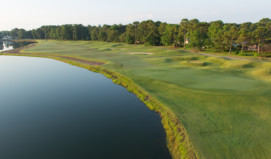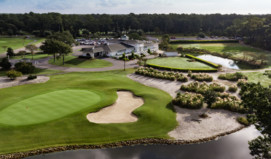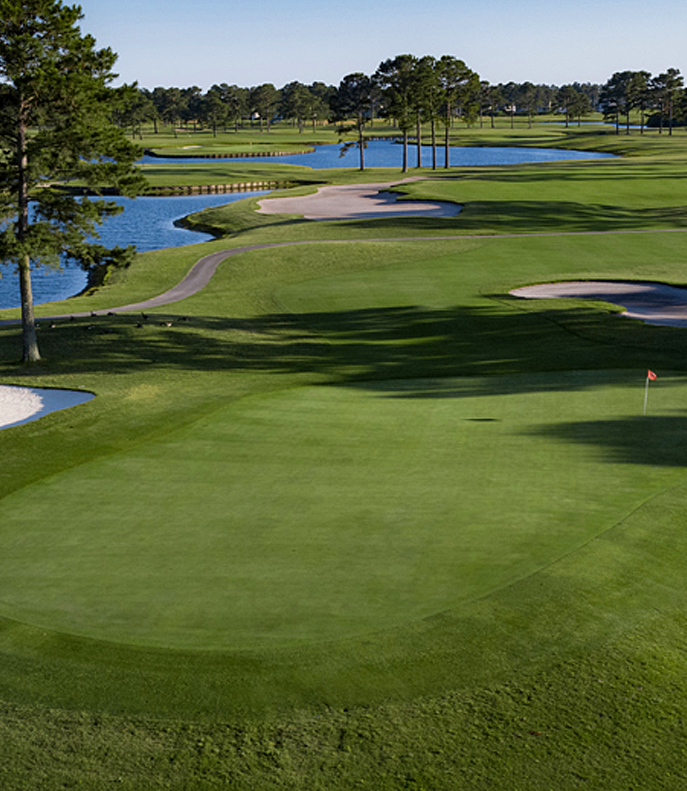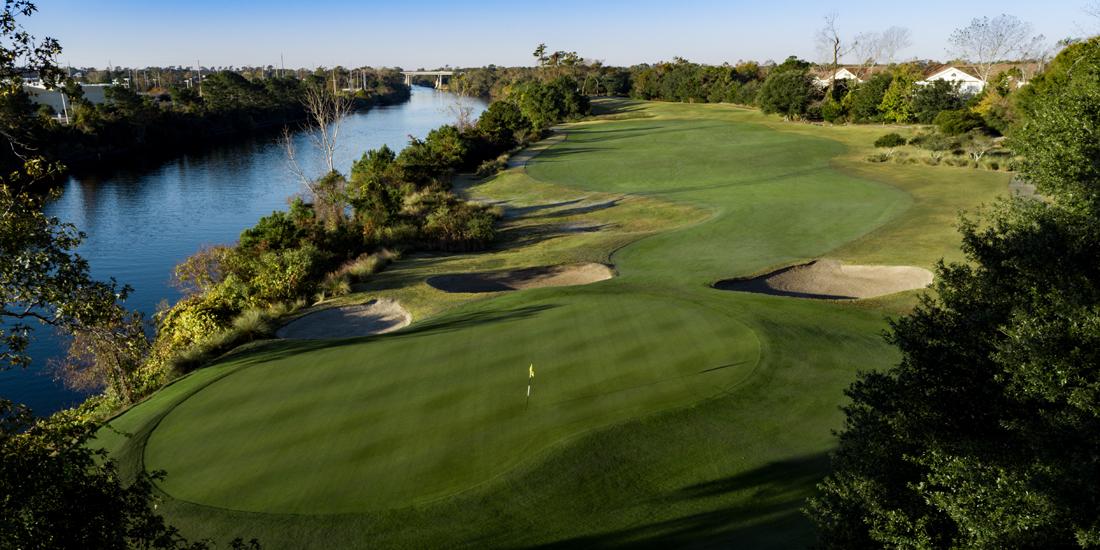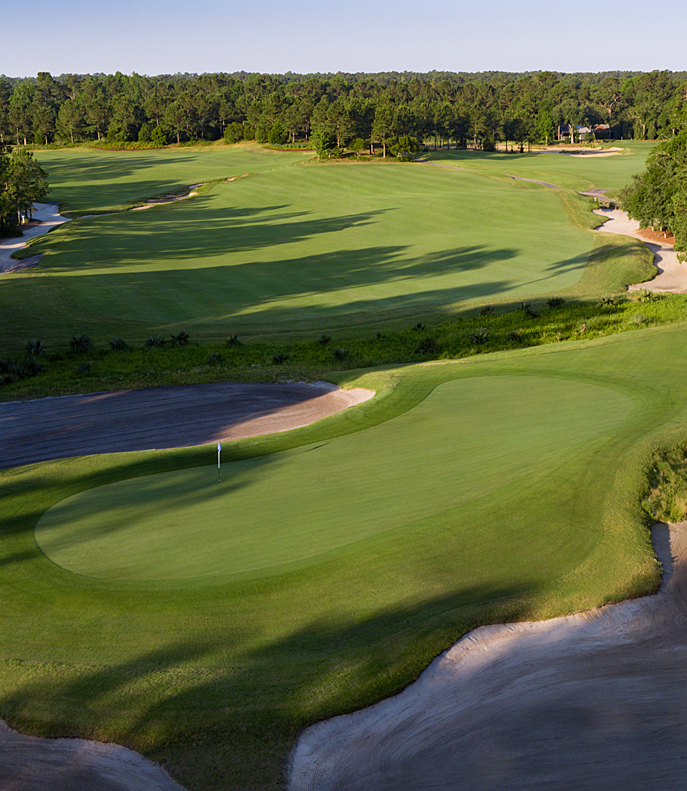Myrtle Beach is home to more than 1,500 golf holes. They come in all lengths and levels of difficulty but a select few give golfers night sweats thinking about the challenge that lies ahead.
With that in mind, after consulting with other grizzled veterans, here is our list of Myrtle Beach’s 18 toughest holes – from the white tees, of course.
Our list includes, four par 3s, four par 5s, and 10 par 4s.
Par 3s
Moorland, No. 7 – How does 220 yards with water on the left sound? This plays like a par 3.5 and if you hook the ball in the water, double bogey becomes a good score. If you don’t have a 220-yard club, the smart move is to layup and play for bogey as opposed to overswinging.
River Club, No. 8 – At 160 yards, the eighth hole at River Club isn’t as obvious a candidate for inclusion as some of the others on this list, but it’s not easy. Golfers must carry water to a narrow green with bunkers in the back and if you come up short, the ball will roll back into the water.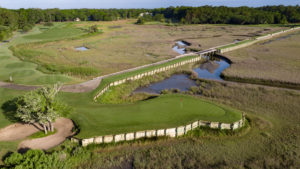
Pawleys Plantation, No. 13 – This is the scariest 75 yards (don’t believe the scorecard as the tees are always up) in Myrtle Beach, playing to a peninsula green that is exposed to a saltwater marsh and the wind coming off the nearby Atlantic Ocean. Anyone that tells you this tee shot doesn’t make them anxious is lying. (pictured right)
Heritage Club, No. 13 – Length is only part of the challenge on this 175-yard one-shotter. The tee shot, which demands a carry over water, is tough but a severely undulating green can be even more daunting. Good luck. (top photo)
Par 4s
Willbrook, No. 1 – If this 400-yarder were the eighth hole, it might not seem as difficult, but it’s not. This is your first hole of the day and you need to split the fairway to avoid being blocked by trees on the dogleg right. Water also lurks on the left and a long approach then awaits.
Pine Lakes Country Club, No. 3 – This 426-yard doozy includes water that runs along the final 100 yards of the hole, substantially tightening the room you have to miss short. A drive that finds the left-center of the fairway is helpful but either way, this is a handful.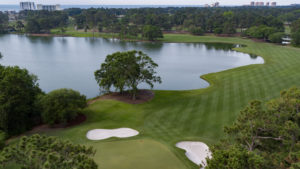
Dunes Golf & Beach Club, No. 3 – Robert Trent Jones Sr. was gifted a piece of land with unusual, natural elevation and he took full advantage of the opportunity on this 390-yard two-shotter. The hole plays uphill from the tee to a green that is always as fast as it is large. (pictured right)
Long Bay Club, No. 4 – Jack Nicklaus designed two courses in the Myrtle Beach area (Pawleys Plantation being the other one), and both have a spot on this list. A 419-yard dogleg left, the fourth at Long Bay requires power and precision to split a fairway that is less than 40 yards wide in the landing area.
Fazio Course at Barefoot Resort, No. 5 – This is the hardest par 4 in the Myrtle Beach area, playing 440 yards to an uphill green. Combine the length with the presence of water and sand, and you have a hole where bogey is a good score.
TPC Myrtle Beach, No. 9 – If the fifth hole on the Fazio Course isn’t the area’s toughest par 4, the ninth at TPC Myrtle Beach is. The hole plays 445 yards but does enjoy the benefit of being straight and there are fewer hazards en route to the green. Any difference in challenge between the two holes is negligible.
Tidewater Golf Club, No. 15 – On the opposite end of the spectrum is the devilish 323-yard 15th at Tidewater. The green is fronted by wetlands so the hole doesn’t allow for much more than 200 yards off the tee, but anything pulled to the left will be blocked out by soaring pine trees. Even perfectly struck drives will leave an approach to a shallow green bracketed by sand and a runoff area.
True Blue Golf Club, No. 17 – On a course known for architect Mike Strantz’ judicious use of waste bunkers to create visual appeal and challenge, the penultimate hole at True Blue is defined by the lake golfer must confront to reach the putting surface. A drive to the left side of the fairway will minimize the water’s impact on this 395-yard beast.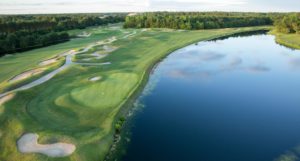
Dye Club at Barefoot Resort, No. 18 – The closing hole on this Pete Dye gem “only” plays 368 yards but it’s a nerve-jangling challenge throughout. Water lines the entire left side of the hole and a series of bunkers are a constant threat on the right. The hole can be shortened off the tee by players willing to challenge the dogleg left but it’s fraught with danger. (pictured right)
Wachesaw Plantation East, No. 18 – Wachesaw Plantation hosted a LPGA tournament just after its 1996 opening, and the closer certainly presented a worthy challenge for the world’s best women golfers (and everyone else for that matter!). The 400-yard brute is narrow, tree-lined on both sides and water lurks on the port side.
Par 5s
Rivers Edge Golf Club, No. 9 – Known as Arnie’s Revenge, the ninth hole at Rivers Edge is equal parts beautiful, harrowing and infamous. Players must navigate the Shallotte River twice before arriving on a green that is just 15 yards wide at its mid-point and surrounded by marshy water. Survival is the goal here.
Grande Dunes Resort Course, No. 13 – The par 3 14th at Grande Dunes attracts all the attention, but No. 13 is the hole most likely to leave a big number on your scorecard. This 499-yard doozy requires players to carry water off the tee and on the approach. Fairway mounding is a factor throughout and a green that runs from back to front will demand your full attention, particularly if you are above the hole.(pictured right)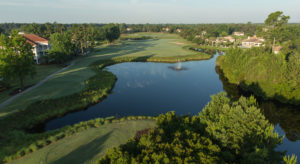
Prestwick Golf Club, No. 17 – Long (499 yards), watery and tight is a lethal combination and the 17th hole at Prestwick possess all three traits. Any shot that is pulled left will be wet and the fairway, at its widest, is less than 45 yards across. If there is even the slightest of hesitation when pulling a club, take the conservative choice and try to take the big number out of play.
Pearl West Course, No. 16 – At 552 yards, a quick glance at the scorecard will leave little doubt as to why this hole induces fear. Combine the length with the threat posed by the Calabash River, which plays along the right side of the fairway, and the 16th on the Pearl’s West Course is both beauty and beast.

